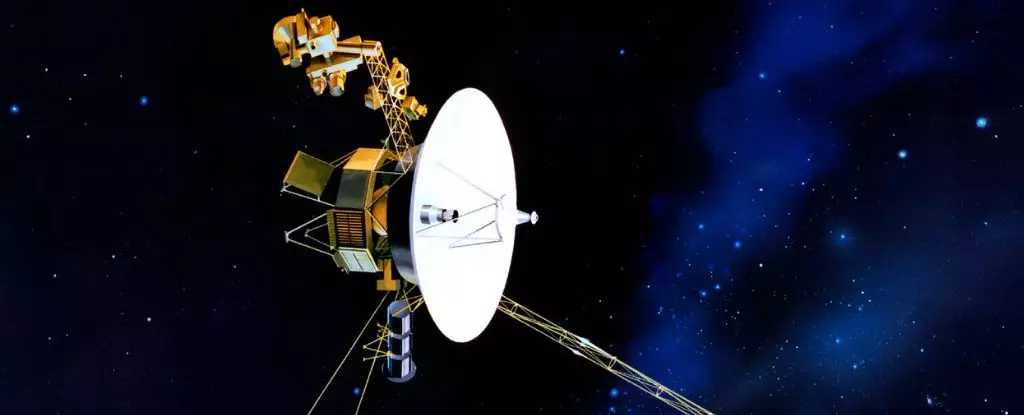Launched in 1977, the Voyager spacecraft—comprising Voyager 1 and Voyager 2—have indelibly altered our understanding of the cosmos and our place within it. This pair of robotic ambassadors has traversed the solar system and beyond, powered by radioisotope thermoelectric generators (RTGs) that utilize decaying plutonium to generate electricity. Although their mission was initially conceived to study planets in our outer solar system, they are now engaged in one of the most ambitious endeavors in science: interstellar exploration. Unfortunately for the scientific community, these systems are gradually losing power, as evidenced by NASA’s recent decision to deactivate the plasma science instrument on Voyager 2.
The recent decision to shut down the plasma science instrument on Voyager 2 arises not just from diminishing power but also from the need to prioritize essential instruments. This specific device measured the quantity and flow direction of ionized particles, contributing crucial data about the plasma environment of interstellar space. In light of the dwindling electricity available, particularly as Voyager’s RTGs lose approximately 4 watts of power each year, engineers have been compelled to make difficult decisions about which experiments to keep alive. This incident underscores the race against time in exploratory science: we often must make sacrifices for the sake of preserving other valuable avenues of inquiry.
Although four instruments remain operational on Voyager 2—including a magnetometer and a charged particle detector—the reality is stark. By the 2030s, it is projected that only one instrument may be left functioning. The unique dataset amassed thus far is invaluable; Voyager holds the keys to our understanding of interstellar space, a domain that is largely untouched and enigmatic. However, the importance of the data should not be overlooked. The plasma science instrument had been collecting limited data due to its orientation concerning plasma flow—a temporal limitation further complicating the decision to shut it down.
The Voyagers: A Legacy of Discovery
The sheer scale of what the Voyagers have achieved cannot be understated. Voyager 2 remains the only spacecraft to have visited the ice giants, Uranus and Neptune, while both probes unveiled astonishing details about the gas giants Jupiter and Saturn. The scientific revelations relating to the atmospheric phenomena, magnetic properties, and composition of these celestial bodies radically transformed our understanding of planetary science. The imagery and data sent back to Earth ignited public interests and reshaped academic inquiry, showcasing the splendor and complexity of our solar system.
Equally significant is their transition into the Voyager Interstellar Mission, wherein each spacecraft now explores the boundaries of the heliosphere and probes the mysteries of the interstellar medium. Voyager 1 crossed into interstellar space in 2012, followed by Voyager 2 in 2018, marking a historic moment for humanity. The fact that these spacecraft can still communicate with Earth—albeit with near 24-hour delays—highlights the technological marvels of the late 20th century.
As the Voyagers forge ahead into the vast unknown, the diminishing power available provides an urgent reminder of the limits of human ingenuity. Although current estimates suggest that the Voyagers can last for a few more years, continuous power struggles will dictate the mission’s lifespan and limit the scope of data collection. By launching in a rare alignment of the outer planets, scientists took full advantage of optimal trajectories; however, time is no longer on our side as we begin to face the constraints of longevity.
NASA’s careful management of resources has included shutting down non-essential instruments to conserve power for those instruments deemed crucial. Similarly, their ability to operate enhances the broader scientific narrative—demonstrating how a commitment to long-term studies can yield immediate and profound results. Yet, as the plasma science instrument’s operation waned just as its observational utility became limited, it reveals a poignant conclusion: every exploration comes with an endpoint reflecting humanity’s unending quest for knowledge.
The continued journey of the Voyager spacecraft is a remarkable chapter in the history of exploration. It illustrates a fervent desire to reach beyond Earth’s confines. As we bid farewell to specific instruments that once spoke volumes about particles whirling through the interstellar medium, we are reminded that exploration always involves navigating uncertainties. Each data point, each discovery, has shaped our understanding and propelled scientific inquiry into uncharted territories.
As NASA engineers manage operational constraints, they ensure that the legacy of the Voyager mission persists, proving that while the instruments may fade, the knowledge obtained will forever illuminate humanity’s path into the cosmos. The Voyagers may be approaching the twilight of their operational life, yet they stand as beacons of discovery, lighting the way for future generations with dreams of what lies beyond.

